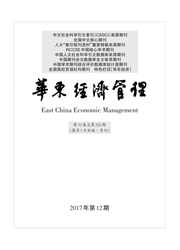

 中文摘要:
中文摘要:
文章使用非线性STR模型,分析2000-2015年间中国经济增长对碳排放的影响过程及结果。研究表明:Granger因果检验显示,人均GDP对人均碳排放量的变动存在单向影响关系;碳排放具有极强的惯性和累积性,上一期碳排放量和上一期经济增长对当期碳排放量都有显著正向影响;碳排放量增长具有典型的非线性效应,并出现了阶段性特征。其中,2000-2003年为线性特征,2004-2012年存在非线性效应,2013-2015年存在线性特征。这种线性与非线性之间的转换关系基本反映了中国近十五年来产业结构和投资结构的变化态势。现阶段需从能源供给结构、生产端和消费端进行综合能源结构的调整,通过构建各地区合理的碳排放约束性目标,实现碳排放与地区经济均衡发展的综合效应。
 英文摘要:
英文摘要:
In this paper, the non-linear STR model is used to analyze the impact of Chinese economic growth on the process and result ofcarbon emissions from 2000 to 2015. The Granger causality test shows that the per capita GDP has a one-way effect on the changes of percapita carbon emissions; The carbon emissions have strong inertia and accumulation, and the carbon emissions and the economic growth ofthe previous period have significant positive effects on the current carbon emissions; The carbon emissions have a typical nonlinear effectand phased features. Among them, there are the linear characteristics from 2000 to 2003, the nonlinear effects from 2004 to 2012. and thelinear characteristics from 2013 to 2015. The Switching relationship between the linear and the non-linear basically reflects the changingtrend of industrial structure and investment structure in China in the past fifteen years. At the present stage, China needs to adjust the com-prehensive energy structure from the energy supply structure, the production side and the consumption side, and build reasonable carbonemissions restriction targets in different regions, so as to realize the comprehensive effect of carbon emissions and regional economic bal-anced development.
 同期刊论文项目
同期刊论文项目
 同项目期刊论文
同项目期刊论文
 期刊信息
期刊信息
